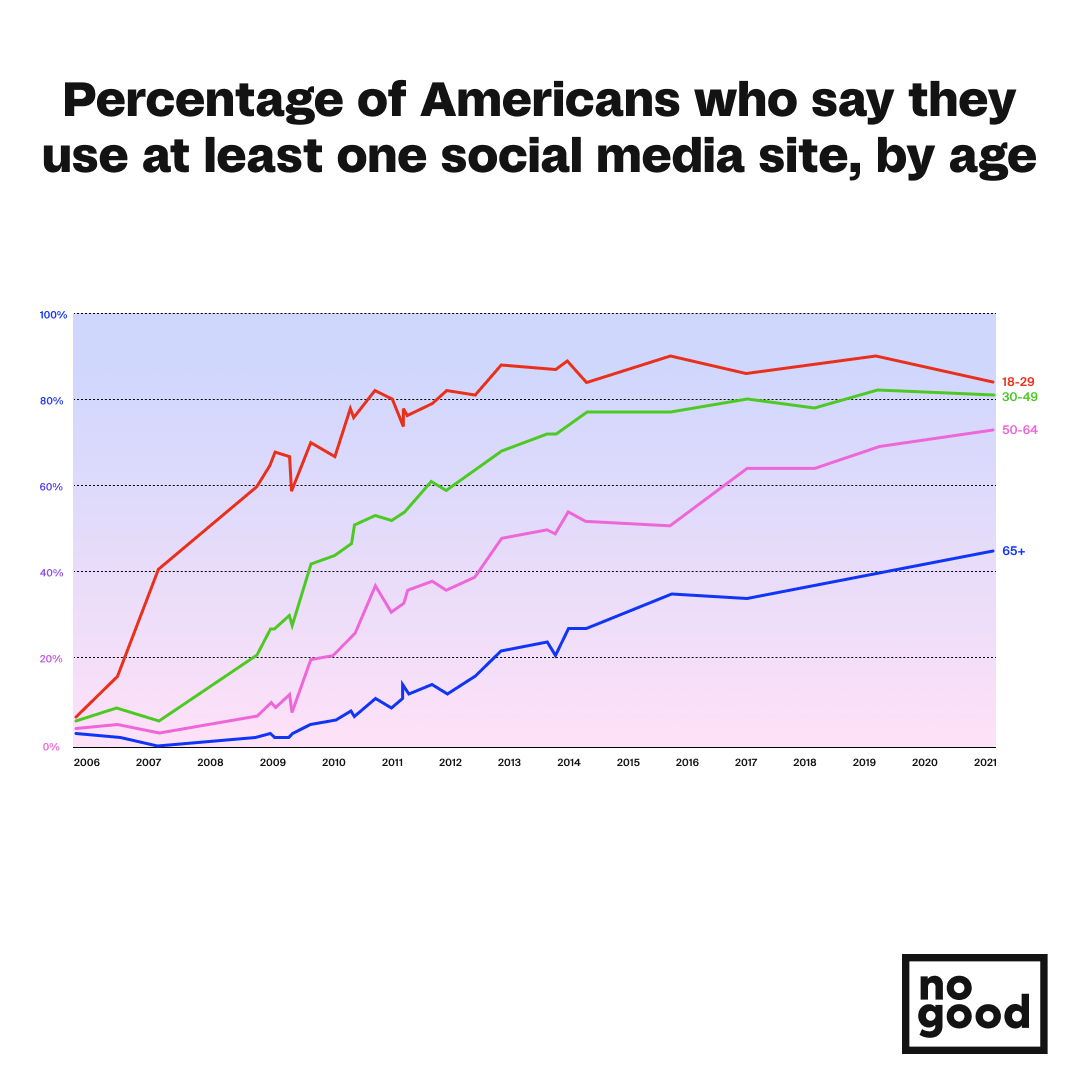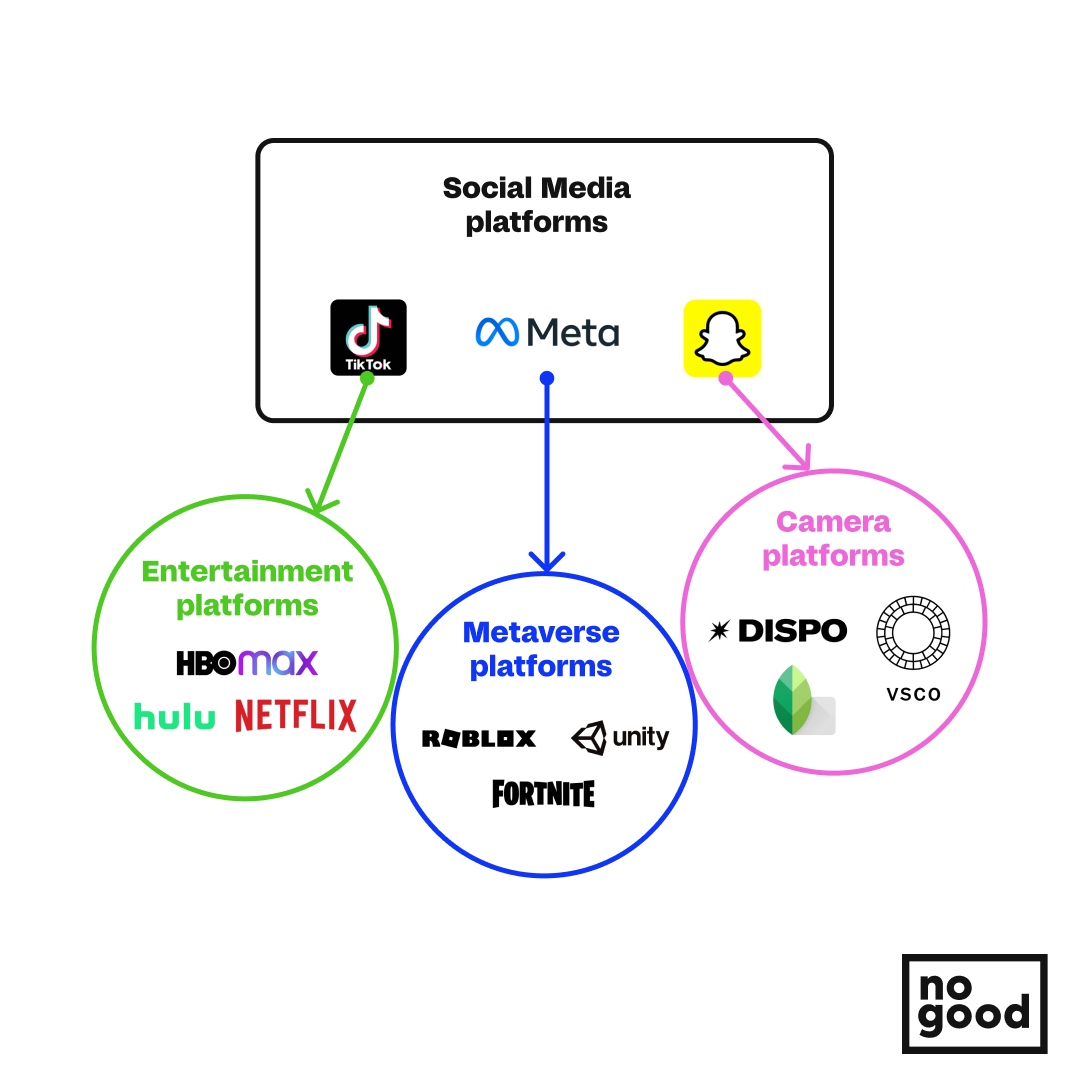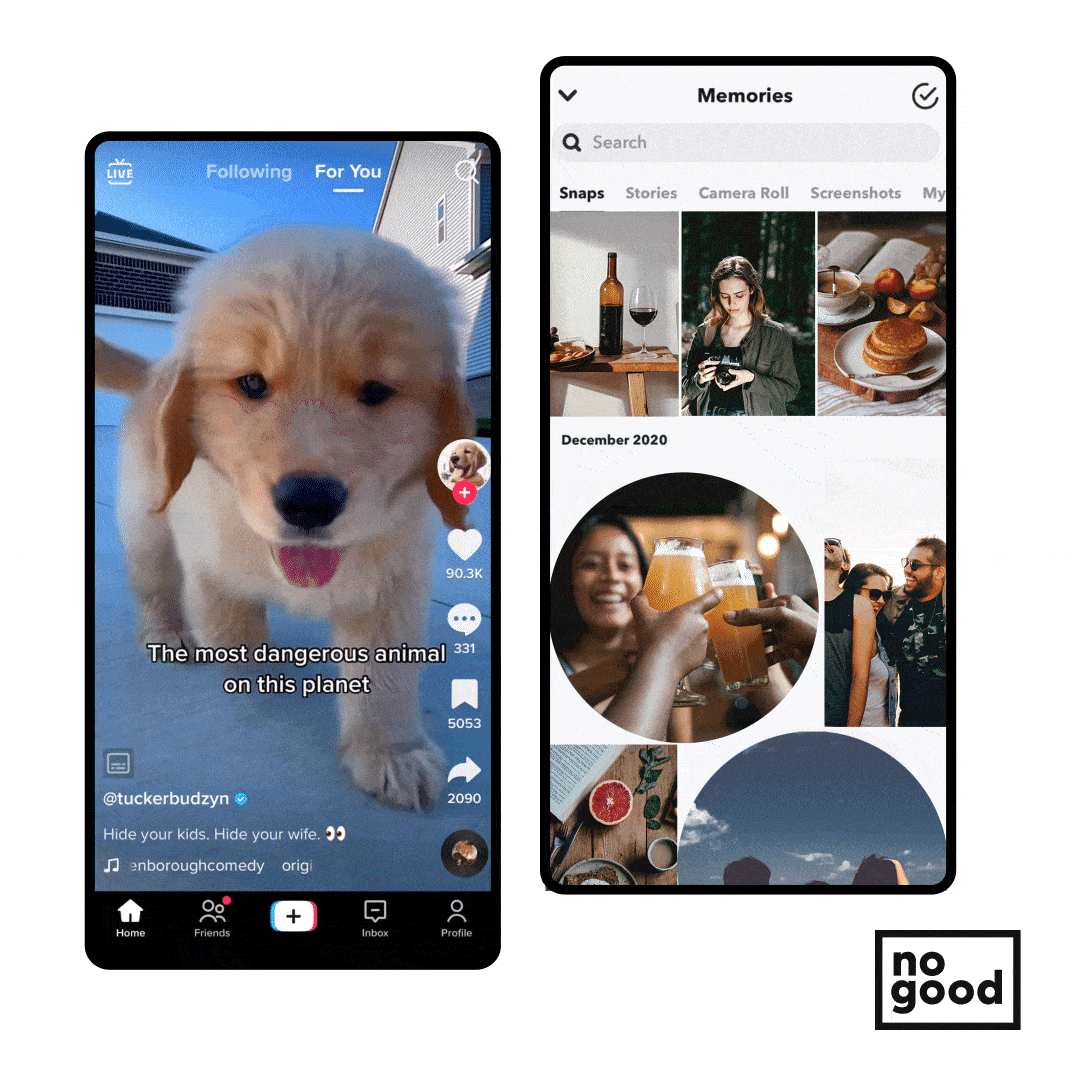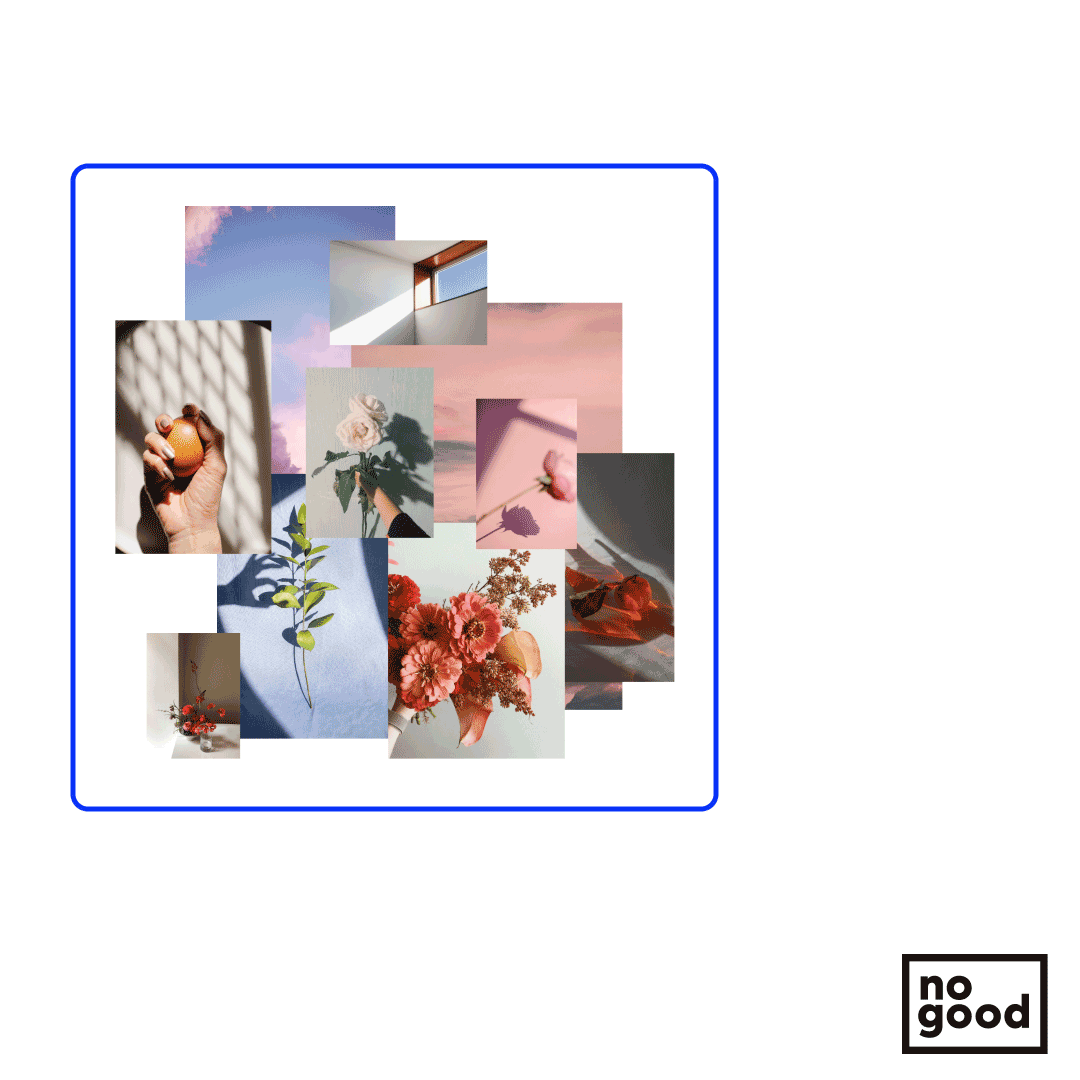Today’s consumers and social media users are looking for different ways to connect with one another — and it shows. We’ve written about the death of social media with the increasing emphasis on consumption over the connection, and now we’re entering a new era of reshaping the way that we interact with social media platforms (if we can even call them “social”).
Social media, as defined by the way consumers have historically interacted with it, is intended to enable users to create and share content in order to socialize with friends, family, and acquaintances. This definition has now changed and has been gradually changing for the past couple of years. Let’s take a closer look at what these changes are.
tl;dr:
- Gen Z is reshaping social media behaviors
- Platforms are straying away from the “social media” label
- No one cares about likes and follower counts anymore
Gen Z is reshaping social media behaviors
Results from a recent consumer survey by Piper Sandler reported that, with the exception of TikTok, Gen Z consumers are the only generation that reported declining use of social media platforms in recent years. Data from Pew Research Centre corroborates this finding by reporting that users between 18 and 25 years old are the only age group to see a decrease in social media use since 2019. These insights may seem surprising given that Gen Z grew up amongst the ubiquity of social media, but it is exactly this familiarity that gives rise to their dissatisfactions; it’s human nature to reject change amidst comfortable familiarity. The apps and platforms that Gen Z consumers know and love have been changing, and as a result users are losing trust in platforms and demanding greater authenticity and consistency from both creators and platforms.

From TikTok’s implementation of Snapchat-like stories to Instagram’s prioritization of short-form video reels, the constant pivots within the social media space have eroded consumers’ trust. Creators are no longer sharing their content with their loyal follower base, but are instead catering to platform-dictated algorithms that favor certain types of content over others in order to keep people on the app for longer periods of time. Newer social media apps like BeReal have tried to address this loss of consumer trust and a greater desire for authenticity, but even the app built specifically for authenticity has now been commodified. Although BeReal encourages users to post their photos during a random 2-minute window during the day, it also gives the option to post later in the day, which means users are able to simply wait and only post during the most presentable and notable moment in their day.
Having lost much of the social element that platforms used to promote, Gen Z consumers are now using social media platforms as search engines, and in doing so have created a paradigm shift in what the primary purpose of these “social media” platforms truly is. The key difference between using traditional search engines versus using social media as a search engine lies in the concept of social validation. With decreasing consumer trust and an increasing appetite for authenticity, consumers want to receive search results that demonstrate the value of their search term through a tangible, real-life user experience. Therefore, to the Gen Z consumer social media is not just a tool for content and discovery or a mode of communication, but also one for information search as well.
Another change in social media that Gen Z consumers are driving is the types of people that they connect with online. While social media used to be a tool to connect online with people you know in real life, algorithm-driven niche communities have now reversed that process. Users are meeting like-minded individuals online that they can then choose to meet with in person if they choose to do so. Think “booktok” or “cottagecore”, these TikTok micro-communities group people together based on common interests, thus creating organic social groups that arise out of similarity rather than real-world connections. This change is a complete reversal of what social media was originally created for and paves the way for a reinvention of how brands and individuals use these platforms in the future.
Platforms are straying away from the “social media” label
Like today’s consumers, platforms are beginning to stray away from the existing definition of social media as well. Most of the platforms that the general public perceives as social media platforms (Facebook, Instagram, Snapchat, TikTok, etc.) don’t label themselves as such. TikTok calls itself an “entertainment platform”, Snapchat is now a “camera company”, and Facebook has rebranded as Meta to become a “metaverse” company. Now that Gen Z consumers are so hyper-aware of the toxicity of social media, large tech companies are responding to this disdain by attempting to distance themselves from the loaded label of being a “social media” platform.

The shift away from the social media label is not unwarranted. These platforms are changing in response to consumer behavioral insights, and the label would reasonably need to change as well. TikTok’s discovery algorithm and user-catered “For You” page (FYP) puts content itself at the forefront of the platform. As long as a piece of content is engaging and relevant to the viewer, the creator’s profile or the number of followers they have doesn’t matter, as viewers don’t need to navigate to a user’s profile in order to see their content — it’ll just show up on their FYP. This content first, profile second model that TikTok uses (and Instagram is beginning to use too) decreases the significance of the individual persona and the social element associated with that identity. Calling itself an “entertainment platform” is, therefore, a more apt description for TikTok than a “social media platform” considering its prioritization of content above all else.
TikTok’s identification as an entertainment platform also has implications for its goals as an app. Traditional social media platforms aim to promote socialization among users, hence their goal would naturally be to acquire more and more users in order to increase the value of the app through a social network effect. Conversely, since TikTok is an entertainment app and not a social media platform, its goal is to provide engaging content so that they can keep users on the app for as long as possible. This goal is comparable to that of other entertainment companies like Netflix or Hulu, which also uses an algorithm to understand a user’s preferences and cater to the content shown in accordance with those insights.
Like TikTok, Snapchat is gradually inching away from the concept of the social media platform with its introduction of “Memories”, a photo library of saved stories, screenshots, and even a private folder labeled “my eyes only”. This searchable, shareable archive of photos and videos is not unlike a typical device’s default photo library, hence supporting Snapchat founder Evan Spiegel’s push to relabel Snapchat as a camera company.

No one cares about likes and followers anymore
The era of competing for the highest amount of likes or followers is over. After multiple research studies linking social media like count with emotional distress, anxiety, and depression, users are tired of the arbitrary standards of social validation that social media has manufactured and normalized. Instagram said goodbye to the toxic hierarchies of the public like counts in 2021 when they released the ability for all users to hide the like count on their posts. By hiding like counts, users place the emphasis on the content of their post rather than the audience’s response to it, thereby reducing the importance of numerical metrics as we enter a new era of social media.
In a similar update, Instagram also allowed users to turn off comments. This update gave rise to the “mood” or “recap” photo dump, typically paired with disabled comments and low-effort candid images that aim to build the appearance of a visually cohesive Instagram “grid”. By disabling comments, users are essentially once again shifting their posting priorities away from the social interaction element and more towards the appreciation of the content itself.

Another feature that rose to prominence is the “Close Friends” story on Instagram or “Private Story” on Snapchat — a private, ephemeral channel only available to the select few people that the user deems as their inner circle. This privatization of authentic social interaction reflects the ongoing shift away from using social media platforms for the primary purpose of socialization. Since social media platforms are now used for content creation, entertainment, advertising, etc., the social piece of the puzzle has now effectively moved to the sidelines (i.e. private messaging spaces). The move to the “close friends” story mirrors a larger consumer desire to leave the real socializing to the remaining parts of social media that aren’t yet commodified or publicized, meaning that social media platforms themselves are becoming less and less “social” as we speak.
Brands need to rethink how they’re using social media
As the social media landscape continues to rapidly evolve, brands need to understand the changing landscape of these platforms and pivot their strategies to leverage the benefits of each platform. Whether it’s by focusing on short-form video content through algorithm-favored Instagram reels and TikToks, or through collaborating with micro-influencers to create UGC, reaching consumers in this anti-social media era is all about rapid adaptability to constant updates. The standard playbook for social media no longer exists, and regardless if this reinvention is for the better or for worse, staying in the know (re: updates, trends, behavioral shifts, etc.) has never been more important.







